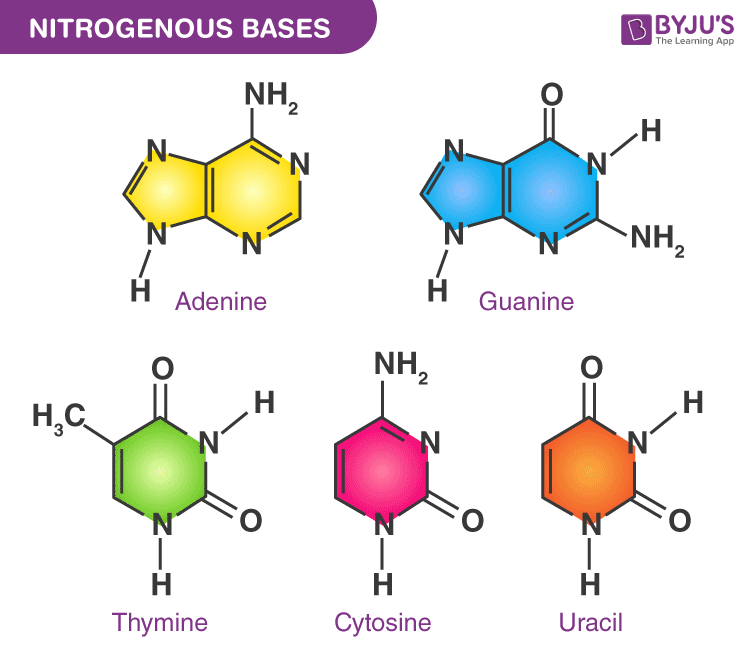Nitrogenous bases, also called nucleobases, are nitrogenous compounds that form an important part of the nucleotides. Nucleotides are building blocks of DNA and RNA that are composed of a sugar, nitrogenous base and a phosphate group. There are a total of five bases found in the DNA and RNA world, namely – Adenine (A), Cytosine (C), Guanine (G), Thymine (T) and Uracil (U).
Let us look at the five nucleotides found in DNA and RNA.

- Adenine
- Guanine
- Thymine
- Cytosine
- Uracil
Adenine is a two ringed purine derived nucleobase that has an amino group attached to the C6 position. In the nucleotide structure it forms a covalent bond with the ribose/deoxyribose sugar and hydrogen bond with the adjacent nucleobase, that is either a thymine or uracil.
Other compounds formed by adenine include vitamin B12, adenosine triphosphate (ATP), nicotinamide adenine dinucleotide (NAD) and flavin adenine dinucleotide (FAD).
Guanine is another two ringed purine derived nucleobase composed of a fused pyrimidine-imidazole ring system that is conjugated with double bonds. It forms hydrogen bonds with cytosine in the nucleotide sequence.
Guanine combines with ribose to form guanosine and with deoxyribose to form deoxyguanosine.
Thymine is an organic compound that belongs to the pyrimidine family. It forms double hydrogen bonds with adenine in the DNA helix. It is also known as 5-methyluracil because it is methylated at the C5 position in the molecule. It is not found in RNA strands.
Cytosine is a pyrimidine derived nitrogenous base that has an amino group at the C4 position. It forms triple hydrogen bonds with guanine in the DNA helix.
Uracil is another pyrimidine derived nitrogenous base that is only found in RNA molecules in place of thymine. It is a demythlated form of thymine that is substituted with oxo groups at C2 and C4.
Visit BYJU’S Biology for more information.
Also Read:
Comments